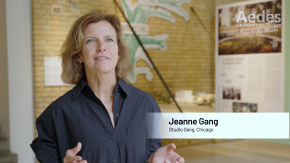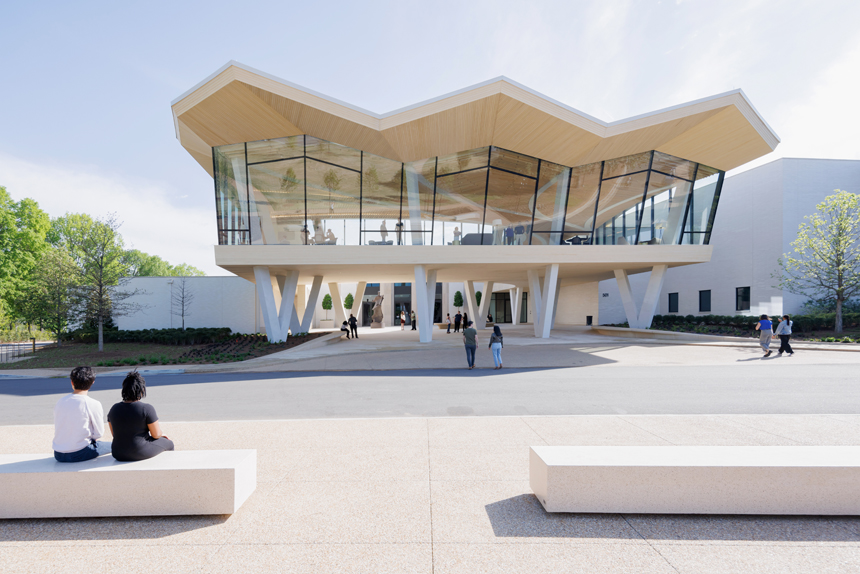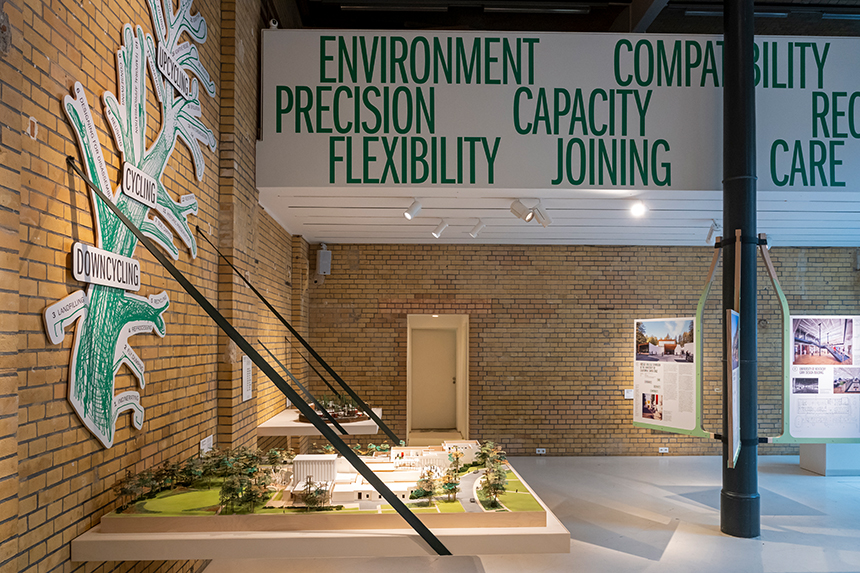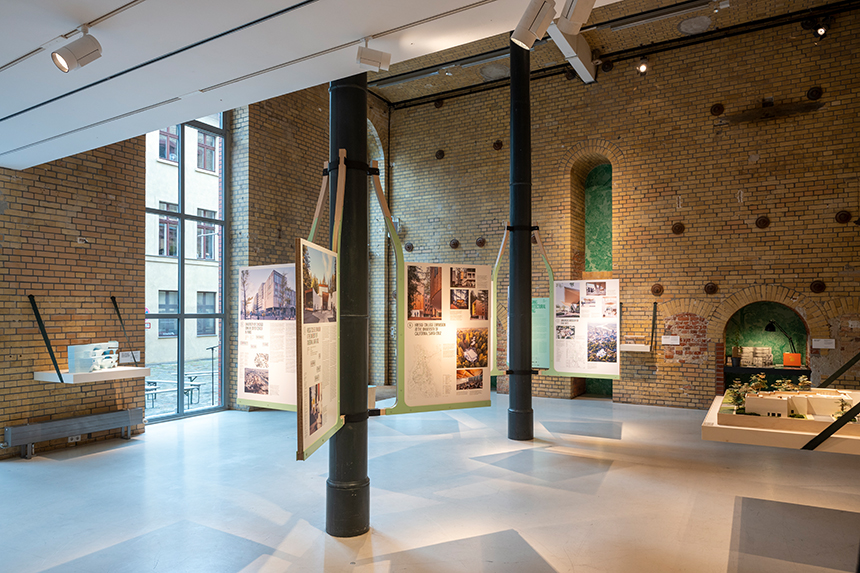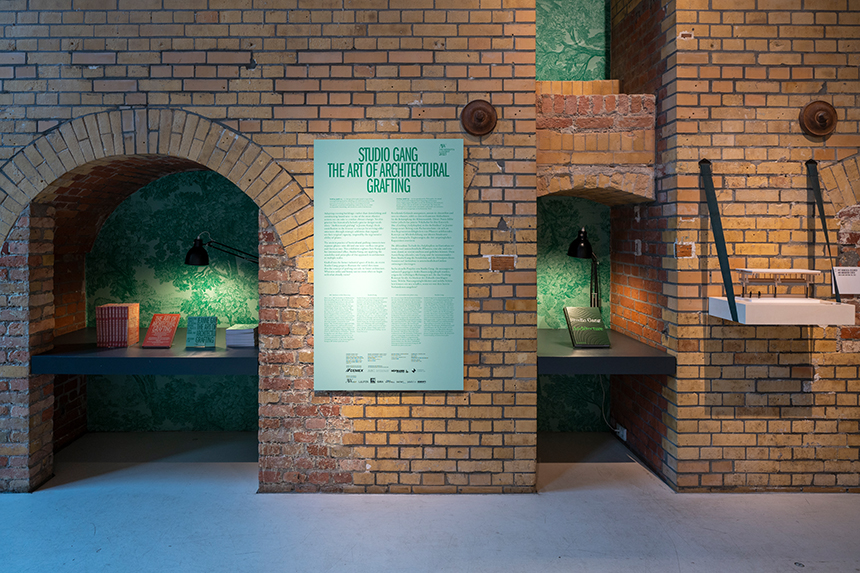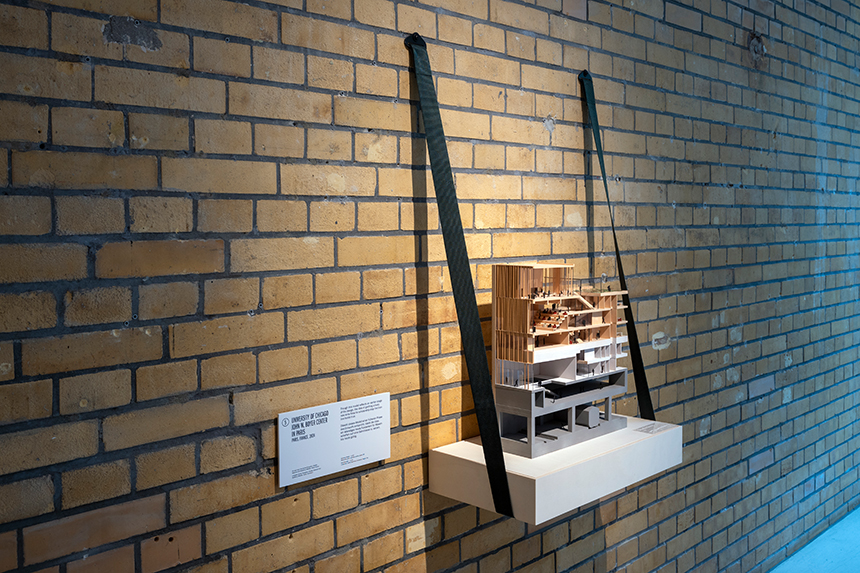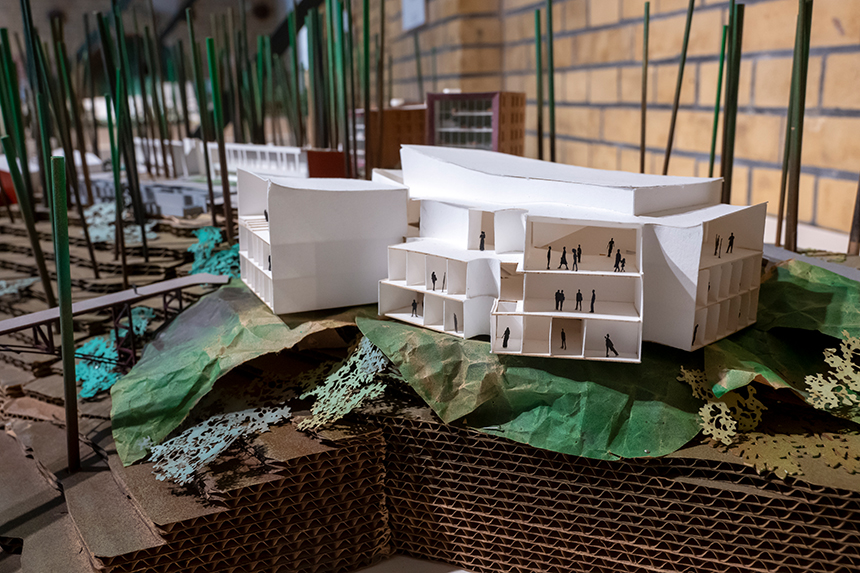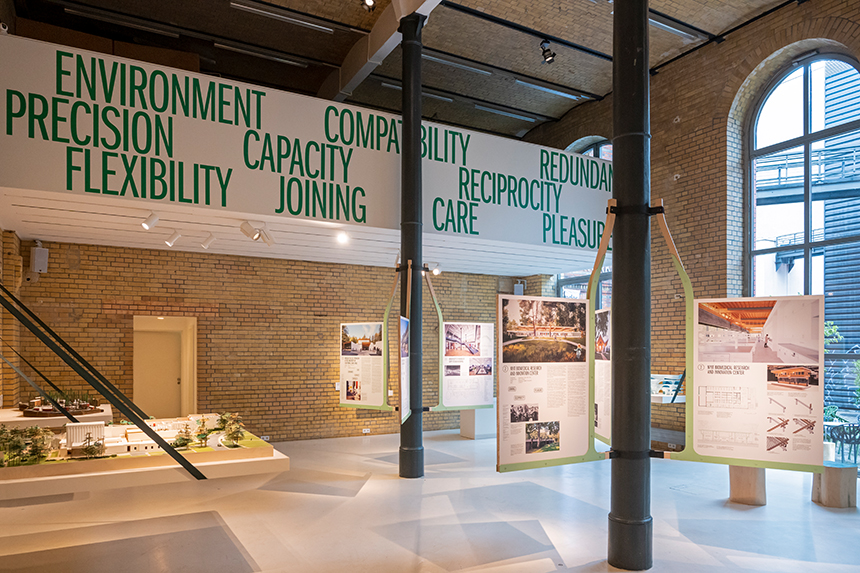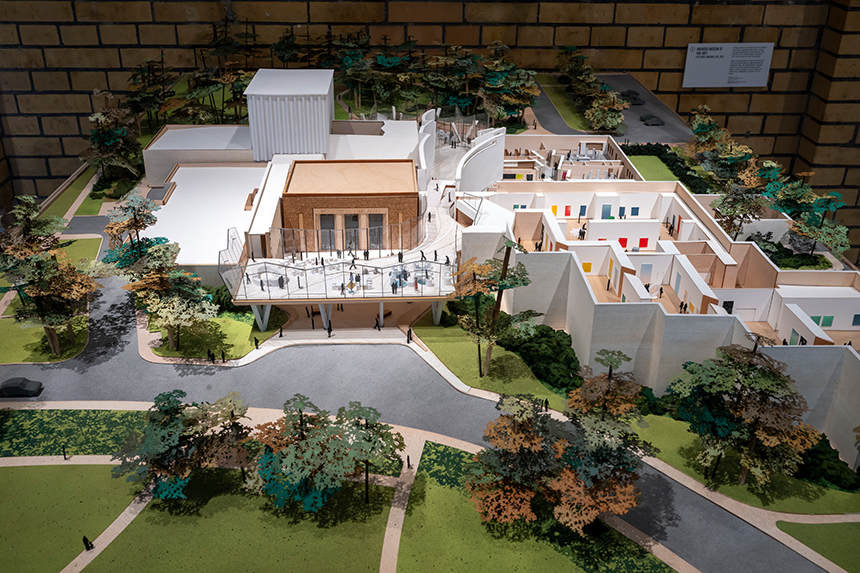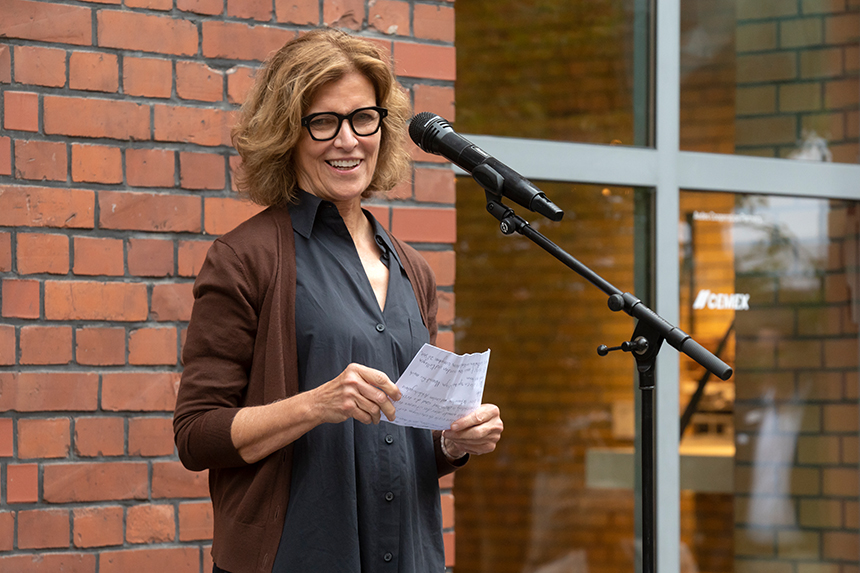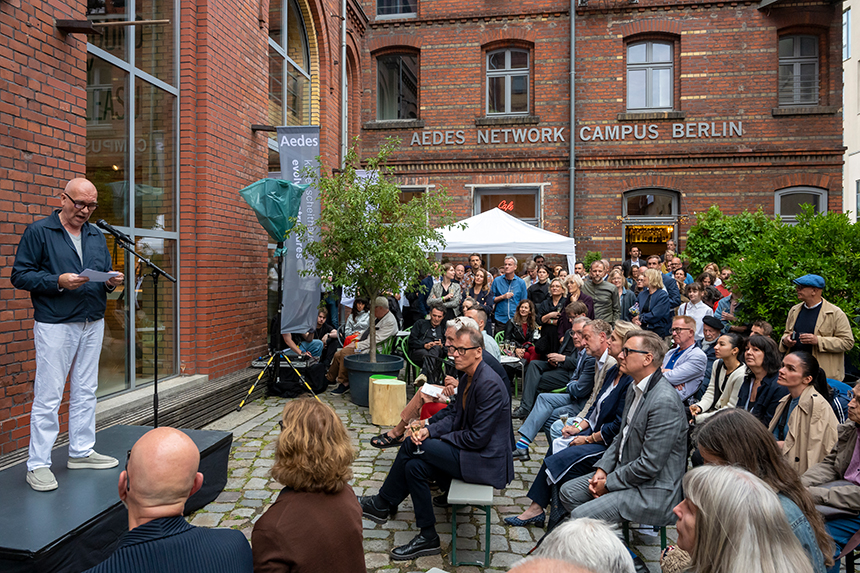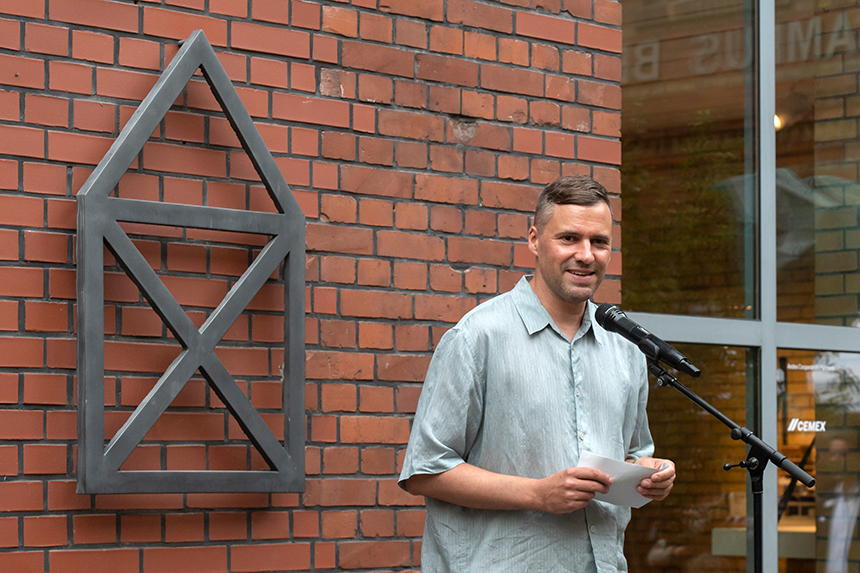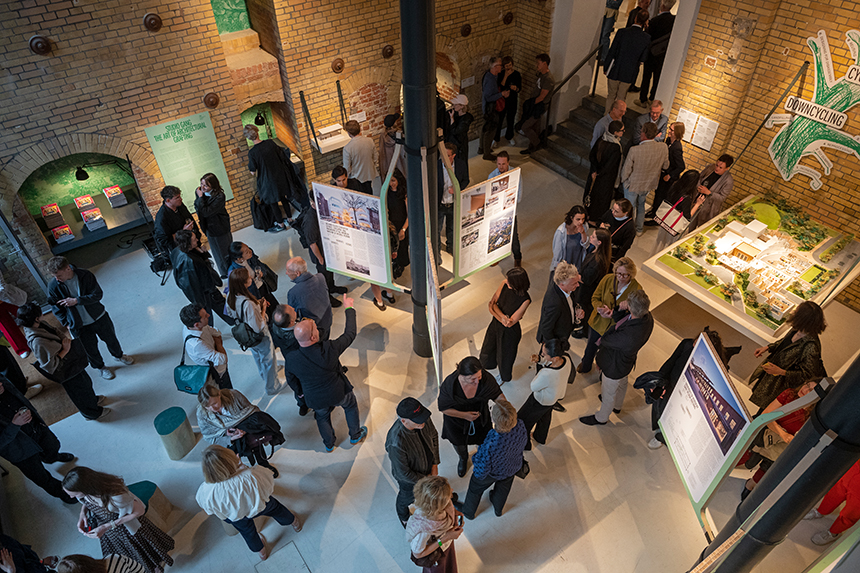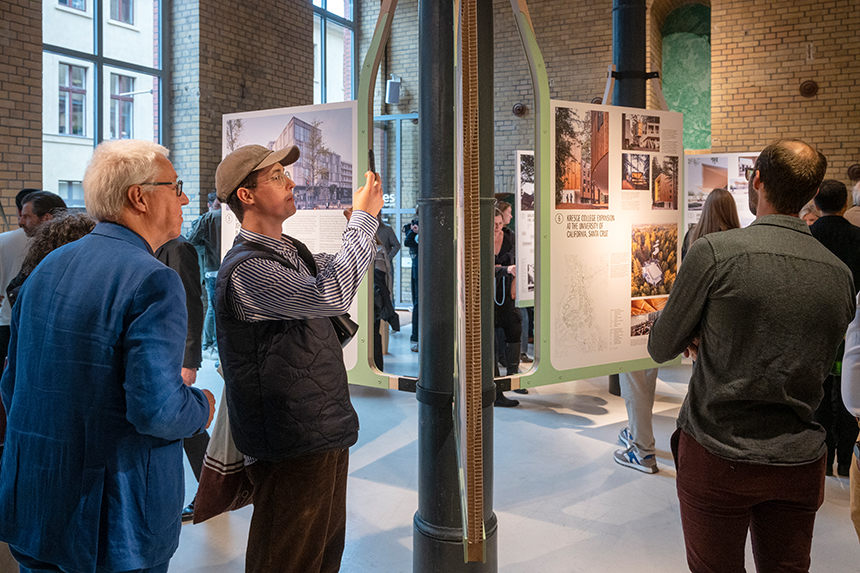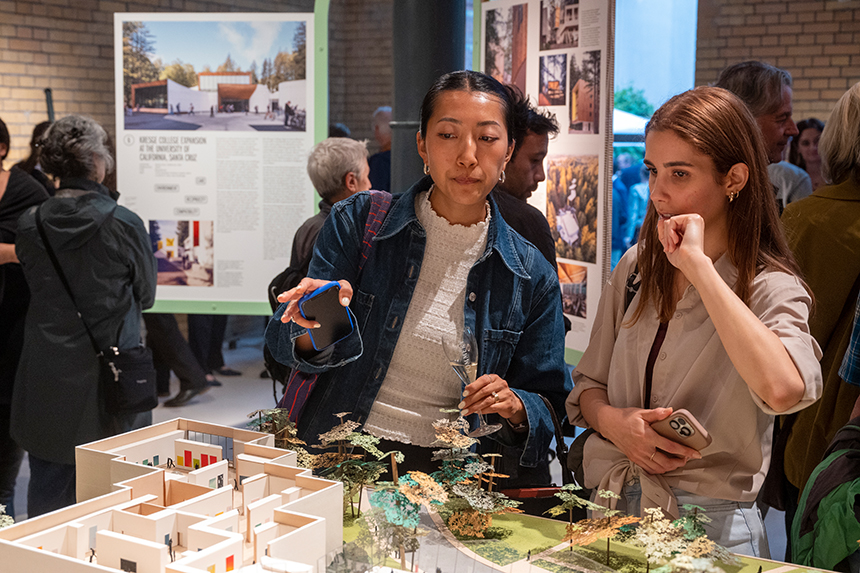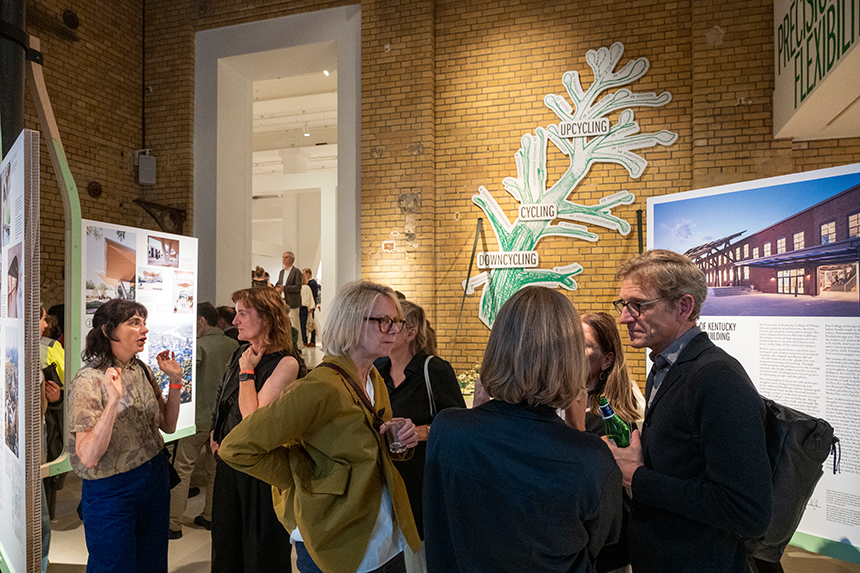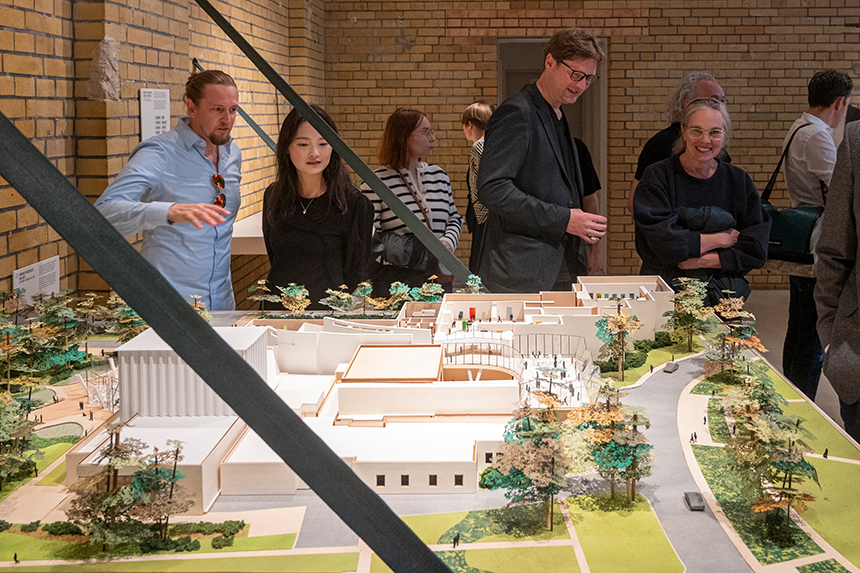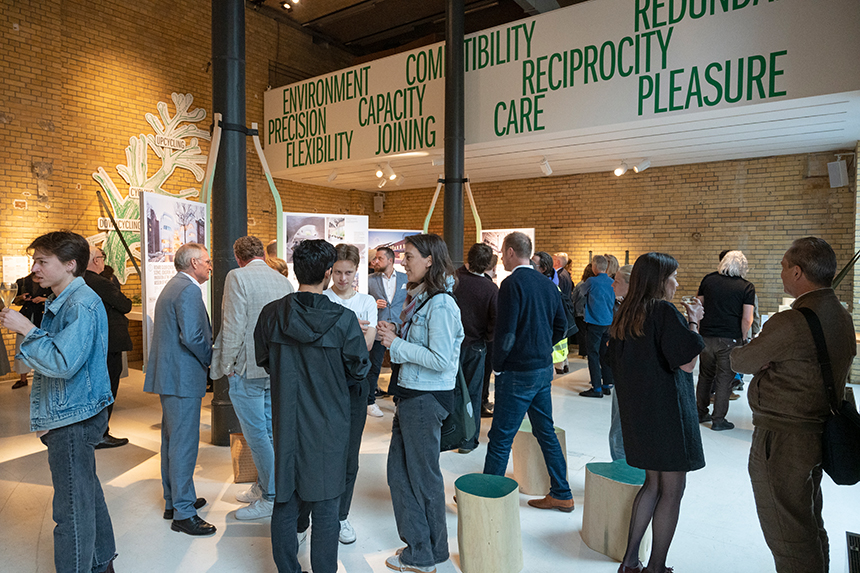Jeanne Gang’s architecture thoughtfully connects people, communities and the environment. Her international architecture and urban design practice, Studio Gang – with offices in Chicago, New York City, San Francisco and Paris – is well-known for bringing new life to 20th-century buildings. Starting from a close engagement with the existing context, the firm uncovers the hidden potential of original structures and transforms them with contemporary extensions through a design language that is both expressive and subtle. For this approach, Jeanne Gang has been named AW Architect of the Year 2025. The exhibition at Aedes presents six recent projects, including the Arkansas Museum of Fine Arts in Little Rock, the Richard Gilder Center for Science, Education, and Innovation in New York City, and the University of Chicago John W. Boyer Center in Paris. These buildings illustrate Gang’s concept of “Architectural Grafting,” inspired by the horticultural technique: old and new are sensitively connected so that they can grow and flourish together.
Building on Jeanne Gang’s recent book of the same name, The Art of Architectural Grafting explores her concept for bringing new life to existing buildings through strategic additions that expand on structures’ original capacity and minimise their carbon footprint.
The horticultural practice of grafting connects two separate plants, one old and one new, so they can grow and flourish as one. This centuries-old technique is still employed today in the quest for more fruitful, tastier and more resilient plant varieties. Gang’s concept of architectural grafting applies the sensibility and principles of this approach to design at multiple scales. Rather than demolition and new construction, this approach focuses on the transformation and expansion of existing structures, thereby preserving both historic fabric and material resources.
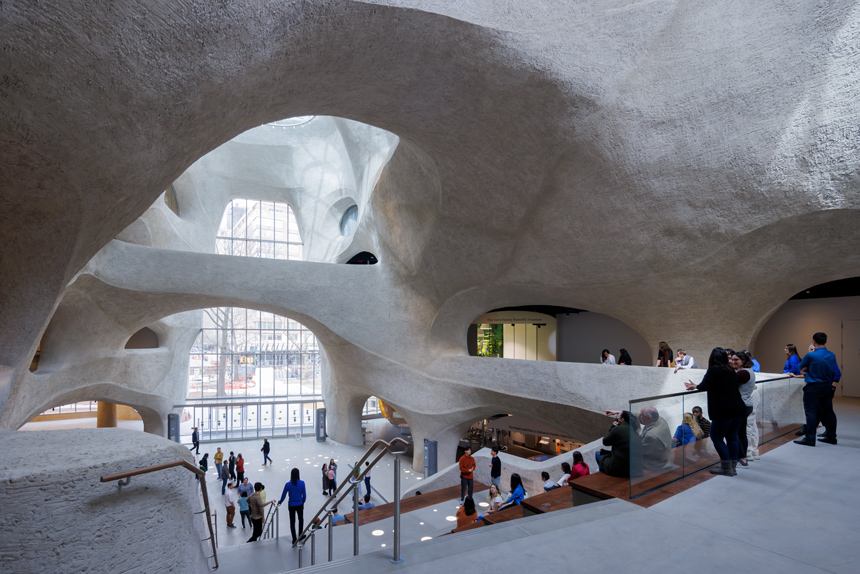
Richard Gilder Center for Science, Education, and Innovation; View of the building’s central atrium. © Iwan Baan
Six Pioneering Projects
Featured in the exhibition are six recent projects informed by this concept:
• Arkansas Museum of Fine Arts in Little Rock, Arkansas, USA
• Richard Gilder Center for Science, Education, and Innovation at the American Museum of Natural History in New York City, New York, USA
• University of Chicago John W. Boyer Center in Paris, France
• Kresge College Expansion at the University of California, Santa Cruz, California, USA
• Gray Design Building at the University of Kentucky in Lexington, Kentucky, USA
• New York Institute of Technology Biomedical Research & Innovation Center in Long Island, New York, USA
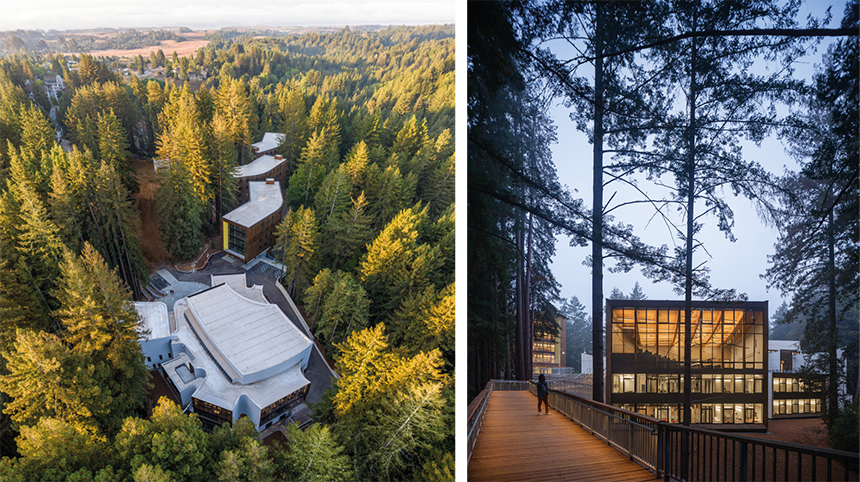
Kresge College Expansion; Aerial view of the expanded campus at the University of California, Santa Cruz. © Jason O'Rear | Kresge College Expansion; View from Ravine Bridge towards the new Academic Center. © Jason O'Rear
Exhibition Design and Media
The exhibition itself is “grafted” into the Aedes space, with custom display elements designed by Studio Gang that attach to the gallery’s columns and walls. Architectural models, drawings, photos, videos, and artifacts illustrate the particular grafting approach of each project, while living plants and botanical imagery animate the concept’s intriguing horticultural roots. The exhibition graphics and catalogue are designed by Zurich-based Elektrosmog.
About Studio Gang
Studio Gang is an internationally recognised architecture and urban design practice founded and led by Jeanne Gang. Based in Chicago with offices in New York, San Francisco, and Paris, the Studio works as a collective of over 100 architects, designers, and planners that use an iterative, research-based design process to create places that strengthen relationships between people, communities, and the natural world.
Studio Gang’s diverse, award-winning portfolio includes cultural centres, public spaces, high-rise towers, and strategic framework plans. Notable amongst these are the Richard Gilder Center for Science, Education, and Innovation at the American Museum of Natural History in New York; the reimagined Arkansas Museum of Fine Arts in Little Rock; and the University of Chicago John W. Boyer Center in Paris.
In addition, Studio Gang is currently designing cultural, civic, and educational projects across Europe and the Americas, including the new United States Embassy in Brasília; an expansion of the Clinton Presidential Center in Little Rock; and the David Rubenstein Treehouse, Harvard University’s first mass timber building.
Studio Gang also develops research, publications, and exhibitions that push design’s ability to create public awareness and give rise to change – a practice the Studio calls “actionable idealism.” Jeanne Gang’s most recent book, The Art of Architectural Grafting, which provides a new framework for bringing new life to older structures, was released last year in both English and French editions.
The Studio has been honoured with numerous awards, including AIA California’s 2025 Firm of the Year, Fast Company’s Most Innovative Company in Architecture, and Architizer’s A+ Firm of the Year Award.
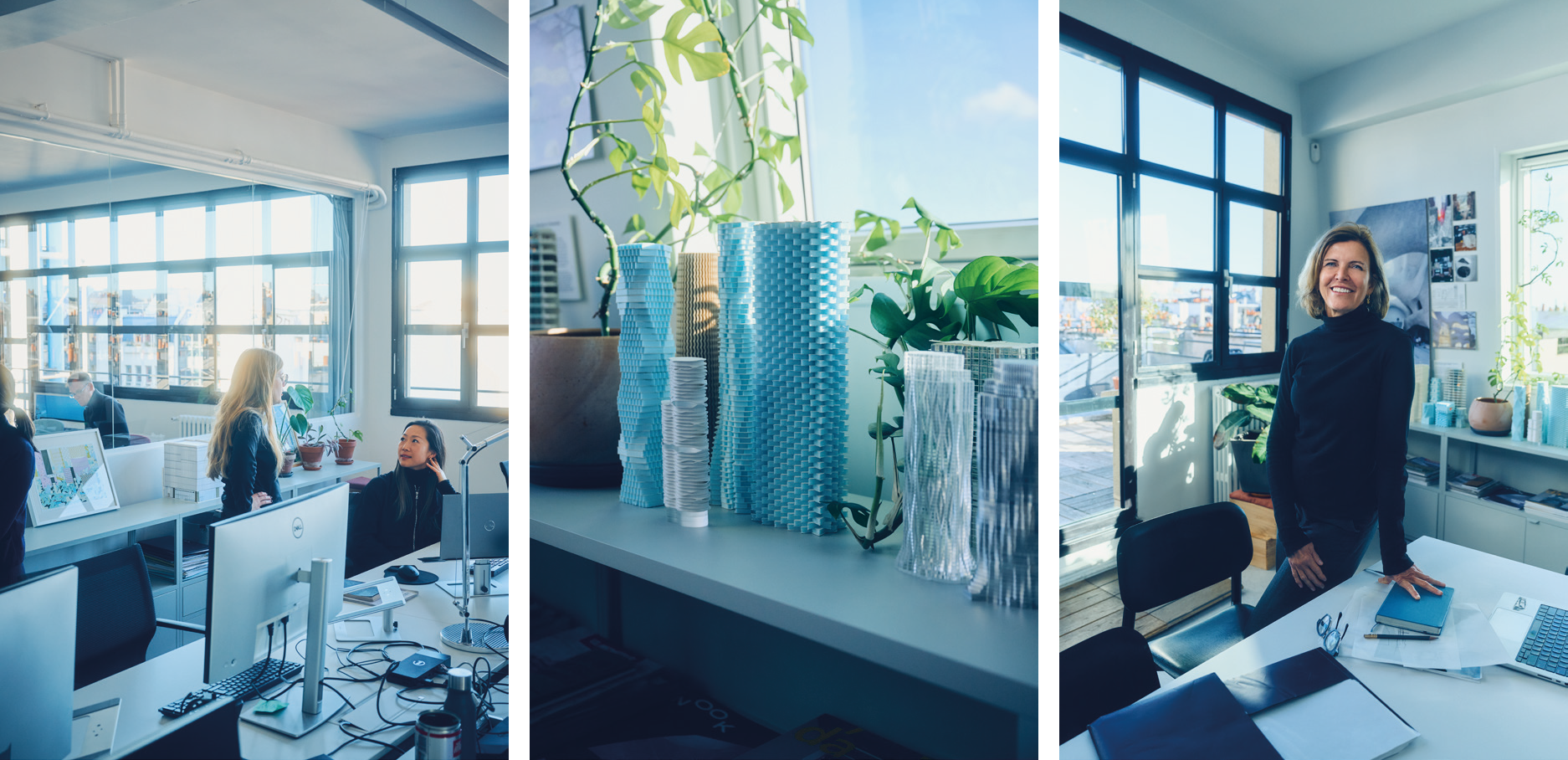
Studio Gang, Paris office, 2025 | Studio Gang, Paris office, 2025 | Jeanne Gang, 2025
AW Architect of the Year 2025
Since 2012, AW Architektur & Wohnen has been awarding the prize AW Architect of the Year to outstanding architects who provide new impulses for architecture, the city and people by means of original concepts and visionary design ideas. In 2025, the winner of the prize is Jeanne Gang. “With her innovative, nature-inspired designs, Jeanne Gang redefines the boundaries between architecture, environment and society. She combines organic, biomorphic forms with sustainable construction methods and develops bespoke solutions for each project. Her interdisciplinary approach links design, architecture and natural sciences with social responsibility and ecological sensitivity,” acclaims Karen Hartwig, Editor-in-Chief of AW Architektur & Wohnen. “Jeanne Gang thus not only shapes skylines, but redefines contemporary architecture as an active contribution to public life. For this exemplary position, we are honouring Jeanne Gang as AW Architect of the Year 2025.”
AW Architektur & Wohnen, with its headquarters in Hamburg, is one of the leading magazines for architecture, design, living, garden design and travel in Germany. For sixty-eight years, the magazine has participated actively in cultural discourse, advocated for the highest quality of architecture, interior architecture and product design.
Since 2012, the editorial team has presented the AW Architect of the Year award. With this recognition, the editorial team honours architects who set new impulses for architecture and cities through individual concepts and creative design ideas. Previous award winners include MVRDV, BIG and gmp, as well as the studios Dorte Mandrup, Snøhetta, Kéré Architecture, Tatiana Bilbao Estudio, Sou Fujimoto and Christoph Ingenhoven, who have exhibited at Aedes in Berlin on the occasion of being awarded the prize.
Aedes Catalogue
English, 10€
> Order here
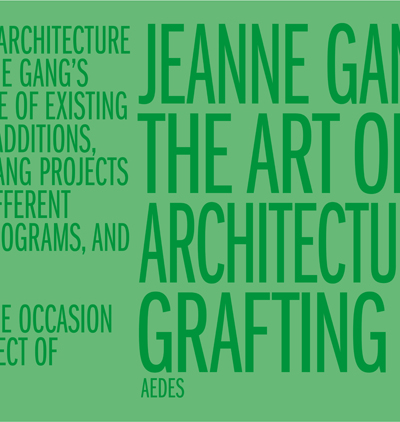
Project Sponsors
AW Architektur & Wohnen, Laufen, Kettler, Gira, Paul Mitchell, Serien Leuchten, jalalld´or, Slalom
Generously supported by
AGC Interpane, Hofmann Naturstein, Mineral Expertise

